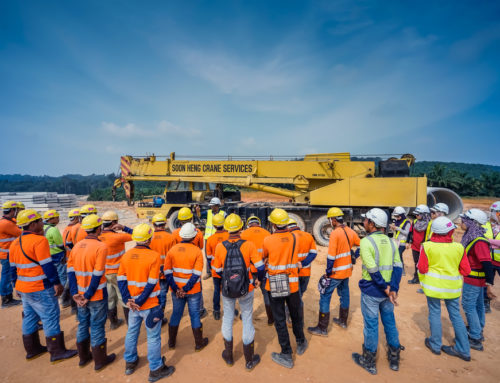In the construction industry, safety is paramount. With its inherent risks and challenges, construction work demands rigorous safety measures to protect the well-being of workers and minimize accidents. A well-structured safety training program is not only essential but also legally required in many jurisdictions. In this blog post, we will explore the key steps to create an effective construction safety training program.
- Assess Your Needs
Before diving into the development of a safety training program, it’s crucial to assess your specific needs. Evaluate the types of construction projects you undertake, the potential hazards associated with them, and the skill levels of your workforce. This assessment will help you tailor the training program to address the most relevant safety concerns.
- Legal and Regulatory Compliance
Familiarize yourself with local and national safety regulations and standards. Ensure that your training program aligns with these requirements. Non-compliance can lead to legal issues and accidents, so staying up-to-date is vital.
- Set Clear Objectives
Clearly define the objectives of your safety training program. What are the specific skills, knowledge, and behaviors you want your employees to acquire? Setting clear goals will guide the content and structure of your program.
- Develop Customized Content
Based on your needs assessment and objectives, develop customized training content. Include modules on topics like hazard identification, personal protective equipment (PPE), emergency procedures, and specific construction site risks.
- Engage Experienced Instructors
Experienced instructors can make a significant difference in the effectiveness of your safety training program. Look for professionals with a strong background in construction safety who can engage and educate your workforce effectively.
- Hands-On Training
Construction safety isn’t just theoretical; it’s practical. Include hands-on training exercises and simulations to ensure that employees can apply what they’ve learned in real-world situations. This can include practicing the use of safety equipment and conducting emergency drills.
- Regular Updates and Refresher Courses
Safety standards and best practices evolve over time. It’s essential to schedule regular updates and refresher courses to keep your workforce informed about the latest safety developments.
- Interactive Learning Tools
Incorporate interactive learning tools such as videos, quizzes, and interactive scenarios to keep employees engaged and reinforce their knowledge.
- Feedback and Evaluation
Implement a feedback mechanism to assess the effectiveness of your training program. Encourage employees to provide input on what is working and what needs improvement. Use this feedback to refine your program continually.
- Documentation and Records
Maintain thorough documentation of safety training records for each employee. This documentation can be invaluable in demonstrating compliance with regulations and standards.
- Promote a Culture of Safety
A safety training program is not just about ticking boxes; it’s about fostering a culture of safety within your organization. Encourage employees to take safety seriously and lead by example.
- Continuous Improvement
The construction industry is dynamic, and safety challenges evolve. Regularly review and update your safety training program to adapt to changing circumstances and ensure its ongoing effectiveness.
Creating an effective construction safety training program is an investment in the well-being of your employees and the success of your construction projects. By assessing your needs, staying compliant, setting clear objectives, and regularly updating your program, you can build a safer work environment and reduce the risk of accidents on your construction sites. Remember, safety should always be a top priority in the construction industry.








Leave A Comment